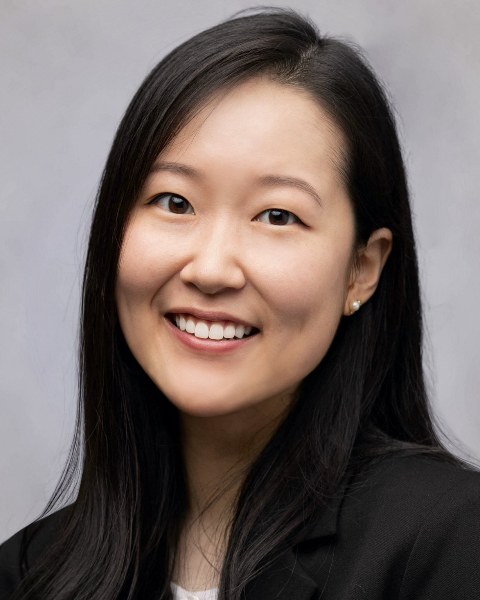PQA 01 - PQA 01 Lung Cancer/Thoracic Malignancies and Diversity, Equity and Inclusion in Healthcare Poster Q&A
2046 - Association of Private Schooling with Matching at Highly Ranked Radiation Oncology (RO) Residency Programs: An Analysis of the Texas Star Dataset
Sunday, September 29, 2024
2:45 PM - 4:15 PM ET
Location: Hall C
Screen: 5

Elaine Cha, MD
MD Anderson Cancer Center
Houston, TX
Presenter(s)
A. Grippin1, E. Cha1, R. Brown2, B. Wen3, F. Chino4, S. C. Kamran5, A. Mihalic3, and N. Vapiwala6; 1Department of Radiation Oncology, The University of Texas MD Anderson Cancer Center, Houston, TX, 2Department of Radiation Oncology, Dan L. Duncan Comprehensive Cancer Center, Baylor College of Medicine, Houston, TX, 3University of Texas Southwestern Medical School, Dallas, TX, 4Department of Radiation Oncology, Memorial Sloan Kettering Cancer Center, New York, NY, 5Massachusetts General Hospital, Boston, MA, 6Department of Radiation Oncology, University of Pennsylvania, Philadelphia, PA
Purpose/Objective(s): We recently showed that graduates of private medical schools are more likely to match highly ranked RO residency programs. We hypothesized that this discrepancy could not be fully explained by other applicant characteristics. Materials/
Methods: We utilized data from the Texas Star Exit Survey, which contains self-reported application data for 40,041 students including 208 applicants to RO residency programs (e.g. step scores, MCAT, GPA, research output, etc.) and self-reported data from RO residency programs regarding handling of 10,049 applications. “Top tier” programs were identified as the five highest ranked on Doximity. “Ivy league” schools and Duke, MIT, University of Chicago, and Stanford were considered “Ivy-Plus” and excluded from this analysis.
Results: We identified 724 applications to “top tier” programs from 198 applicants including 120 from public medical schools and 64 from non-Ivy-Plus private (“private”) medical schools. Applicants to “top tier” programs from public medical schools had similar Step 1 scores (242 vs 241, p=0.072), Step 2 scores (253 vs 249, p=0.08), abstracts (p=0.57), and honored clerkships (p=0.38), but had one fewer peer-reviewed publication (5.2 vs 6.3, p=0.030) compared to applicants from private medical schools. Interviewed applicants from public medical schools matched into “top tier” programs at similar rates as interviewed applicants from private medical schools (14.5% vs 16.6%, p=0.63). However, applicants from public medical schools were less likely to be extended interviews from “top tier” programs compared to those from private medical schools (36% vs 45%, p=0.02). Factors associated with receiving an interview offer at a “top tier” program on univariate analysis included attendance at a private medical school (p=0.0047), higher USMLE Step 1 score (p<0.001), higher USMLE Step 2 score (p<0.001), a greater number of honored clerkships (p<0.001), more abstracts, presentations, and posters (p=0.030), more peer-reviewed publications (p<0.001), and more volunteer experiences (p=0.012). In a logistic regression analysis exploring predictors of interview offer at a “top tier” program (AUC=0.73, p<0.0001), significant factors included attending a private medical school (ß=0.37, 95% CI: 0.0058 to 0.74), higher Median Step 1 scores (ß=0.034, 95% CI: 0.015 to 0.054), increased numbers of honored clerkships (ß=0.15, 95% CI: 0.074 to 0.24), peer-reviewed publications (ß=0.15, 95% CI: 0.095 to 0.21), and volunteer experiences (ß=0.13, 95% CI: 0.069 to 0.19).
Conclusion: Applicants from public medical schools are offered interviews from highly ranked radiation oncology programs at lower rates than applicants from private medical schools. This difference was not explained by baseline applicant characteristics including USMLE Step 1, number of honored clerkships, number of peer-reviewed publications, and number of volunteer experiences.
Purpose/Objective(s): We recently showed that graduates of private medical schools are more likely to match highly ranked RO residency programs. We hypothesized that this discrepancy could not be fully explained by other applicant characteristics. Materials/
Methods: We utilized data from the Texas Star Exit Survey, which contains self-reported application data for 40,041 students including 208 applicants to RO residency programs (e.g. step scores, MCAT, GPA, research output, etc.) and self-reported data from RO residency programs regarding handling of 10,049 applications. “Top tier” programs were identified as the five highest ranked on Doximity. “Ivy league” schools and Duke, MIT, University of Chicago, and Stanford were considered “Ivy-Plus” and excluded from this analysis.
Results: We identified 724 applications to “top tier” programs from 198 applicants including 120 from public medical schools and 64 from non-Ivy-Plus private (“private”) medical schools. Applicants to “top tier” programs from public medical schools had similar Step 1 scores (242 vs 241, p=0.072), Step 2 scores (253 vs 249, p=0.08), abstracts (p=0.57), and honored clerkships (p=0.38), but had one fewer peer-reviewed publication (5.2 vs 6.3, p=0.030) compared to applicants from private medical schools. Interviewed applicants from public medical schools matched into “top tier” programs at similar rates as interviewed applicants from private medical schools (14.5% vs 16.6%, p=0.63). However, applicants from public medical schools were less likely to be extended interviews from “top tier” programs compared to those from private medical schools (36% vs 45%, p=0.02). Factors associated with receiving an interview offer at a “top tier” program on univariate analysis included attendance at a private medical school (p=0.0047), higher USMLE Step 1 score (p<0.001), higher USMLE Step 2 score (p<0.001), a greater number of honored clerkships (p<0.001), more abstracts, presentations, and posters (p=0.030), more peer-reviewed publications (p<0.001), and more volunteer experiences (p=0.012). In a logistic regression analysis exploring predictors of interview offer at a “top tier” program (AUC=0.73, p<0.0001), significant factors included attending a private medical school (ß=0.37, 95% CI: 0.0058 to 0.74), higher Median Step 1 scores (ß=0.034, 95% CI: 0.015 to 0.054), increased numbers of honored clerkships (ß=0.15, 95% CI: 0.074 to 0.24), peer-reviewed publications (ß=0.15, 95% CI: 0.095 to 0.21), and volunteer experiences (ß=0.13, 95% CI: 0.069 to 0.19).
Conclusion: Applicants from public medical schools are offered interviews from highly ranked radiation oncology programs at lower rates than applicants from private medical schools. This difference was not explained by baseline applicant characteristics including USMLE Step 1, number of honored clerkships, number of peer-reviewed publications, and number of volunteer experiences.
